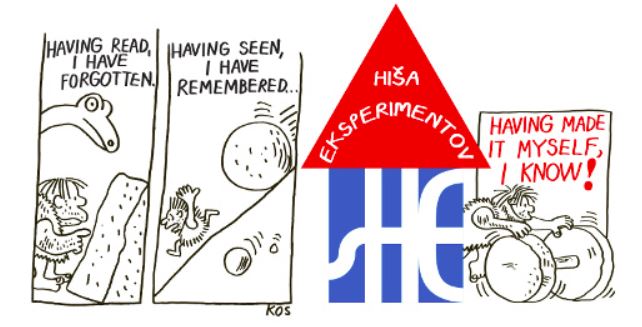Travel
STA, 18 June 2022 - Slovenia will get a Computer Museum (Računalniški muzej) on Saturday, located in Ljubljana's Šiška district and opening its doors with an exhibition highlighting computer software, among other things. The museum will feature one of the largest collections from the world of computers in this part of Europe.
The actual museum comes after the Computer Museum has already been active as an NGO since 2004. Its head Gaja Zornada told the press on Thursday the decision had been made because of the rapid changes in society, which was constantly in contact with technology.
Zornada stressed the museum was not only meant for computer scientists, but for anyone unfamiliar with the history of computers. It also provides a supportive environment for educational processes.
"The Computer Museum is a place for active engagement, which is why we have several different volunteer programmes through which individuals can join specific museum projects to the best of their abilities, spend quality time together and learn new skills."
The opening exhibition, entitled "What About Software?", focuses on the less enduring side of computing - computer software.
It will also feature an item that will be part of the museum's permanent collection - one of Slovenia's most famous Internet servers from the 1990s, Stenar, which was ceremoniously handed over by the Academic and Research Network of Slovenia (Arnes) on Thursday.
The server was bought in 1991 to connect Slovenia to the world, allowing information to flow freely, and was also used by researchers and journalists at the Slovenian Press Agency to send information from Slovenia to the world in the 1990s.
The collection, which has been growing steadily for 18 years, now contains more than 1,500 items.
"I think we can comfortably say that this is one of the largest collections in this part of Europe," said Boštjan Špetič, head of the museum's collection.
It ranges from computers to software and also includes an extensive collection of books related to computers, books that libraries normally refuse to hold on to nowadays.
Precious rare pieces featured at the museum include the first scientific pocket calculator HP35 and the first laptop computer of the Jožef Stefan Institute.
Learn more at the website: https://www.racunalniski-muzej.si/
STA, 17 June 2022 - The 40th Idrija Lace Festival will open on Friday evening to feature in three days almost 50 various events dedicated to the bobbin lace making in the western Slovenian town, including presentations, exhibitions, lace making workshops, competitions and culinary and musical shows.
The theme of this year's festival, which will open with the raising of the festival flag, is What Will You Do With That?, which "indicates the constant search to express oneself by Idrija lace in a new way," the organisers said.
Almost 50 events will take place as part of the festival, with the main one scheduled for Saturday, when the quality of lace featured will be assessed and the best ones receive the Idrija Lace certificate.
A national lace making competition will take place on Sunday, while the festival will also see an in-person gathering of lace makers who have been connected on-line during the coronavirus epidemic.
A total of 16 lace-related exhibitions will be held at various venues in Idrija, most of which will remain open all summer.
The main exhibition is set up in Idrija Castle, featuring selected projects as part of cooperation between textile design students at the Ljubljana Faculty of Natural Sciences and Engineering and a local experimental group of lace makers.
"The products are connected by the idea of combining traditional Idrija lace and modern street fashion, with the students transferring the tradition of the past to the present," said Maja Svetlik of the local lace making school.
Multimedia artist Eva Petrič will be featured with two projects, including a 20-square metre "corona rose" made of bobbin lace, which was previously exhibited in Munich and Bern. It will be put on display in the Church of Saint Joseph the Worker.
An exhibition of lace produced as part of an international competition will make a comeback after ten years, featuring pieces from Italy, Germany, the Netherlands and other countries, with as many as eleven authors being under the age of 18.
The local lace making school will stage an exhibition of works by its students, while a collection of golden jewellery modelled after Idrija lace will be on display at Kenda Mansion.
The festival celebrating the tradition that has made it to the UNESCO Representative List of the Intangible Cultural Heritage of Humanity will also feature guest lace exhibitions from Žiri and Croatia's Lepoglava and Split.
STA, 17 June 2022 - The swimming season is kicking off at the coast with the opening of a new beach and park in Koper's Žusterna district. As part of a EUR 3.7 million investment the municipality of Koper transformed a degraded area into a beach that is now suitable for swimming and other activities.
The project began in early 2019 when rock seawalls were moved from the area and an embankment was built to protect it from flooding.
Now, lawn covers most of the park, while the rocky part of the coast is covered with large concrete plates. A walkway with benches runs through the park where around 200 trees and many bushes have been planted.
There are free toilets available and multiple food and drinks establishments.
Access to water is possible on a shingle beach.
The project was mostly funded by the municipality of Koper with the EU contributing around EUR 770,000 in grants.
STA, 16 June 2022 - Rogaška Slatina will host between 16 and 19 June the first international festival of sports film of the Federation Internationale Cinema Television Sportifs (FICTS) in Slovenia. Under the banner Culture Through Sport, the festival will bring more than 35 feature films and documentaries, and a number of activities, events and presentations.
On Saturday, 18 June, the focus will be on Olympic films and sports, so several local sports clubs and associations will be presented. A round table debate will also be held to discuss women in sports and honour Slovenian NBA players, the Rogaška Slatina municipality says on its website.
The festival's programme will feature films such as One for All by David Ilundain, documentary Balandrau, Hell Frozen Over by Guille Cascante, comedy On Your Marks by Maria Pincikova, Elie Grappe's Olga, a film about 15-year-old Ukrainian gymnast, and Žućko by Gordan Matić, a semi-documentary about Yugoslav basketball legend Radivoj Korać.
Also to be screened is The Pygmalion Effect, a film about the psychological approach that Ante Kostelić used on his children Janica and Ivica Kostelić, who went to become Olympic and world skiing champions.
Several Slovenian films will also be on the programme, including Moj Novi Cilj (My New Goal), Kristjan, and Strast do Letenja (Passion of Flying).
Accompanying the festival will be two exhibitions: a photo exhibition dedicated to the Slovenian Sports Day, which was first presented in front of the Presidential Palace in Ljubljana, and an exhibition showcasing several unique trophies, cups and presents made by glassworks Steklarna Rogaška.
Several awards will be conferred at the closing ceremony on Sunday, 19 June, including for best documentaries, best feature film, and best promotional film. The winners will represent Slovenia at the FICTS closing film festival in Milan.
Slovenia was officially endorsed as the 21st FICTS film festival venue at the end of last year and Rogaška Slatina was picked as the town to host the event after months of deliberation.
The festival has 125 members around the world and takes place in 20 countries from five continents.
STA, 31 May 2022 - Starting on Tuesday, the French carrier Air France will operate two daily flights to Ljubljana airport from Charles de Gaulle airport (Paris) during the summer months.
The carrier will fly to Paris from Ljubljana in the morning and in the afternoon. Passengers will be able to take a return flight to Ljubljana in the afternoon and in the evening, said an Air France spokesperson.
"The additional flight will bring greater connectivity to other Air France's destinations and the time slots are ideal for planning a weekend getaway," Air France-KLM's regional sales manager Ildiko McPartlin-Kiss was quoted in a press release, adding this would bring more foreign tourists to Slovenia.
Babett Stapel, managing director of Fraport Slovenia, is also pleased with the development of the Ljubljana-Paris flight connections. "We are very pleased we have managed to upgrade the long-standing partnership with Air France with a stronger presence on the market, and air traffic is even greater than in the pre-pandemic era," she said.
According to the carrier, they will offer flights to 200 destinations from Charles de Gaulle airport this summer, increasing the number of flights to 90% compared to their 2019 passenger traffic, while also adding some new destinations to their flight itinerary.
Ljubljana Airport is currently served by twelve other airlines, and the summer schedule is expected to include the launch of Israir flights to Tel Aviv and Air Montenegro flights to Tivat.
STA, 27 May 2022 - Contemporary art lovers can look forward to an eventful three days in the capital, as the first Ljubljana Art Weekend festival kicks off today. Connecting the most important venues of contemporary art in the city, the festival will bring more than a hundred exhibitions, guided tours, workshops, round table debates, and performances.
More than 300 artists will be presented at various locations around the capital, with most of today's events taking place at the Cukrarna art centre.
This afternoon an event called Young Collectors: Speed dating will be held there to help beginners embarking on the path of collecting. Young collectors will seek advice and guidance on how to build their own art collections from seven representatives of the professional community.
Two group exhibitions will open at Cukrarna - Created in Slovenia and Marcin Rusak Studio: DNA of Things - and a round table debate will be held on collecting art, featuring experts from Vienna, discussing the connections within the art community, the specifics of contemporary art collecting and the role of galleries, art experts and art fairs in encouraging a new generation of art lovers and collectors.
A performance by Mateja Bučar dubbed I would've been a palm tree will also take place at Cukrarna tonight. The performance, which can also function as an installation, shows movement (dance) that is connected to a single point in space, but is constantly engaging with the space around it.
In the Ajdovščina underpass, a guided tour of an exhibition by Janja Kosi and Tytus Szabelski Significantly Local will be held, while a commercial pop-up exhibition by the Študio photographic studio and creative space will present their existing and latest zines, artist books, photographs and prints.
Another guided tour will be organised at the City Art Gallery, presenting group exhibition Artist - Collector - Public. The Hilger Collection, while at the Photon Gallery visitors will receive a tour of the group exhibition Back to Black. Contemporary Analogue and Hybrid Photography.
It will also be eventful at the Alkatraz Gallery, P74 Gallery and Pešak Gallery where guided tours and exhibition openings will take place.
Several events were held on Thursday and many more are scheduled for Saturday and Sunday. During the festival, entrance to the galleries is admission free between noon and 6pm. The whole programme is available here.
The festival is organised by the Ravnikar Gallery Space in cooperation with Cukrarna/Muzej and Ljubljana city galleries and the municipality.
House of Experiments’ 13th Festival Brings Science to Ljubljana Street Friday to Sunday
STA, 27 May 2022 - The House of Experiments is hosting the 13th Znanstival, a festival promoting science, education and critical thinking, which will occupy the streets, squares and bridges of Ljubljana from Friday to Sunday to turn the capital in "one of the largest science centres in the world."
As part of the festival, a number of scientific shows and workshops will take place in and around Ljubljana, also featuring international guests from all over the world, in addition to performers from the House of Experiments.
Apart from the centre of the capital, the event will this year also visit the nearby towns of Polhov Gradec, Medvode, Zalog and Grosuplje, as a "bus full of experiments" will stop there for one hour and open its doors to visitors.
Meet the People: Miha Kos, Founder and Director of Hiša Eksperimentov
Today's opening event is taking place in Prešeren Square, presenting the guests and their activities to make it easier for visitors to decide which show or scientific workshop to see first. The three-day programme is available at www.znanstival.si.
Interactive experiments will also take place - on Saturday, a "scientific adventure" called Busology will be held in a city bus that will travel around Ljubljana. The entry and exit station is the Dragon Bridge in the city centre.
A series of interactive presentations, called The Garden of Experiments, will also take place on Saturday and Sunday, featuring a selection of institutions that promote science and education.
The House of Experiments in Trubarjeva Street will also open its doors free of charge for a limited number of visitors.
Within Slovenia’s vastly forested landscape roams a sizeable population of European brown bear. There once was a time many years ago when trying to spot one, let alone photograph one, was all but impossible. Despite its might and fearsome reputation, the brown bear is in actual fact a shy and elusive creature. Spotting one in the wild was the realm of local people and hunters. However, all that has now changed. Many little bear tour companies have popped up over the years. Although, when it comes to bear photography, all roads lead back to one place and one person, Miha Mlakar of slovenianbears.com. This is the best way to photograph bears in Slovenia.
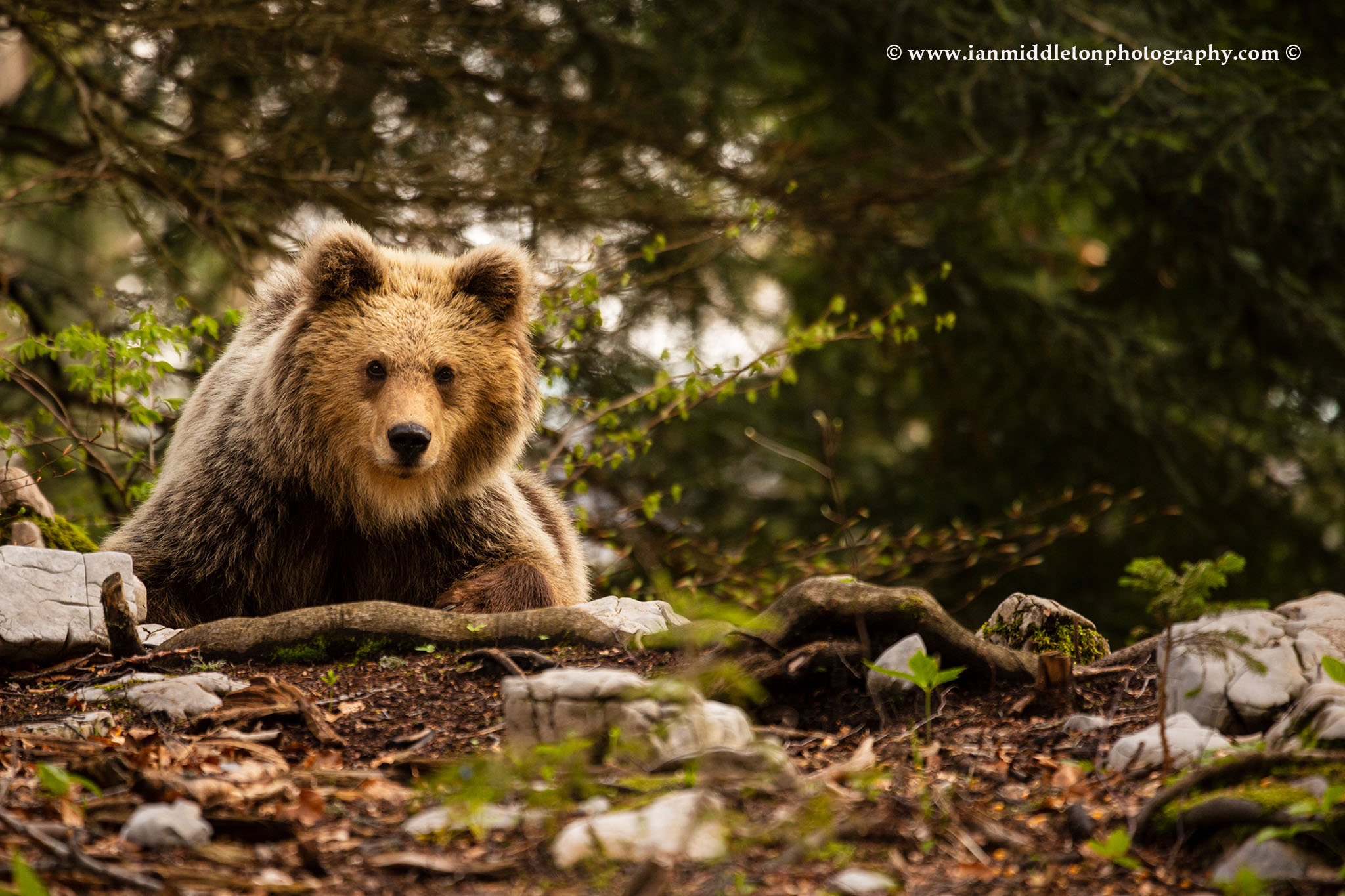
Combining his passion for bears and photography
Having spent his childhood roaming the forests of Snežnik, Miha secretly watched all the wild animals as they went about their daily lives, including brown bears. He got to know their patterns, habits and more importantly learned to read their traces. Brown bears are most common in this part of Slovenia, and encounters with the king of the Slovenian forest have left an indelible mark upon him.
A fortuitous meeting with two renowned Italian photographers sent Miha on his path to photographing bears and other wildlife himself. This subsequently led him to his idea for building special photographic hides in order to ensure a safe environment for both the bear and the photographer.
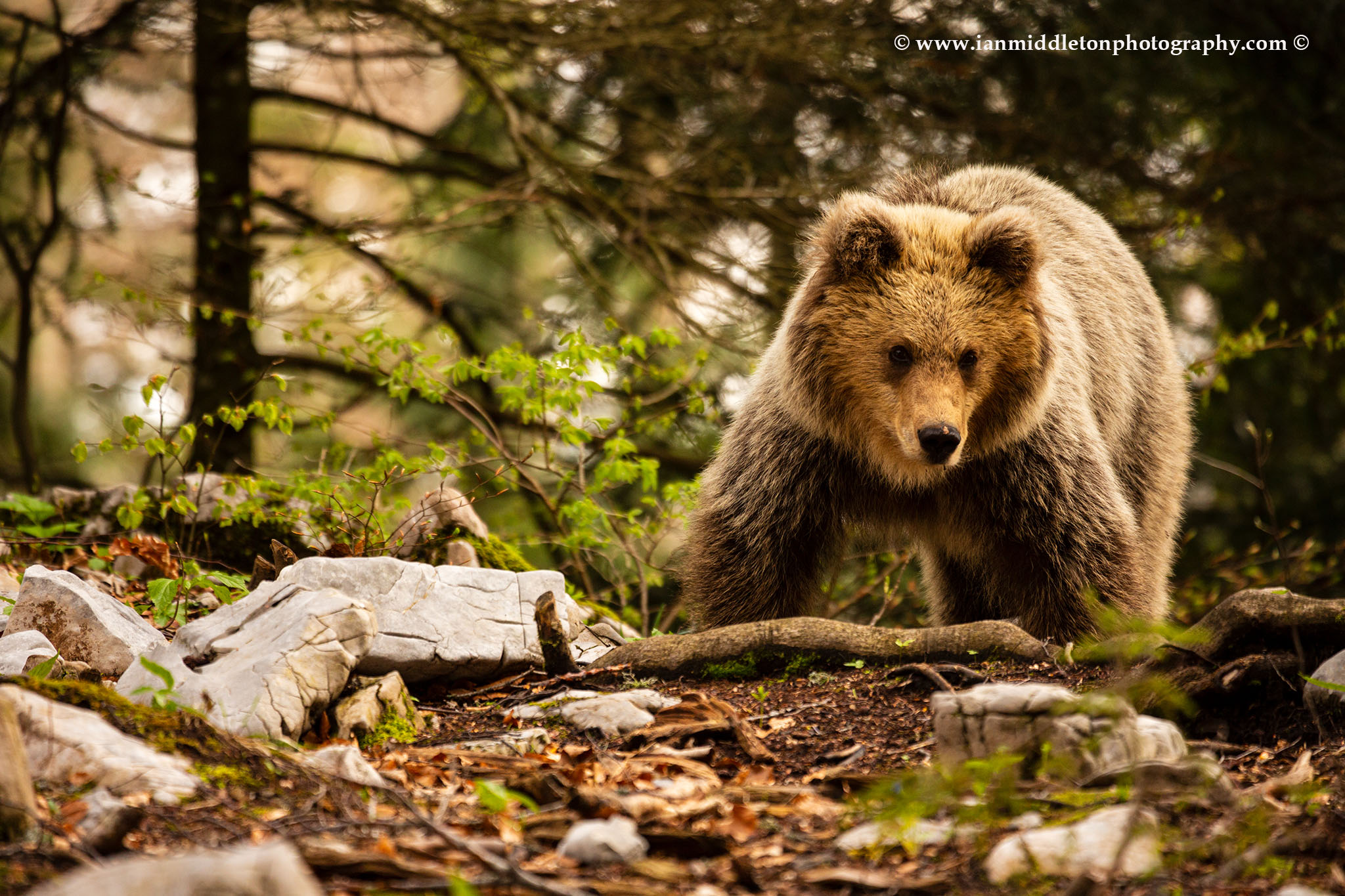
The best combination of knowledge
By combining his years of knowledge and experience watching and tracking the bear’s habits with his newfound knowledge and skills as a photographer, Miha has pioneered the way for nature and wildlife photographers to visit Slovenia and capture these elusive creatures in all their wonder and glory. Not only does he know how to build a hide that would be safe for both the occupant and the bear, but he also knows exactly what photographers need inside to maximise their chances of capturing great bear photos.
Miha’s intimate knowledge of the bears, their movements, habits and habitat means he knows in which locations you are most likely to have a sighting. His knowledge of photography has helped him decide where to place the hides in order to make use of the best afternoon and morning light. A limited amount of food, corn, is placed in specially selected areas. These areas, along with the hide placements, have also been chosen for optimum light and with the photo angle in mind. The viewing windows are aligned as much as possible for a straight on view rather than looking down. When photographing wildlife, you need to get down to the animal’s level.
The locations of these hides and feeding areas have also been selected in cooperation with the hunting organisation. This ensures the same locations are used throughout. The amount of feeding areas and food is strictly regulated by the Slovene authorities. While it may seem controversial, feeding of the bears and other wildlife has long been a tradition in Slovenia and other European countries. Feeding helps keep track of numbers and control the population, but more importantly reduces the chances of human contact by helping to ensure hungry bears do not stray into inhabited areas. Additionally, this feeding cycle increases the chance of sighting and photographing bears from Miha’s hides. Therefore, as you can see, everything is done in perfect harmony.
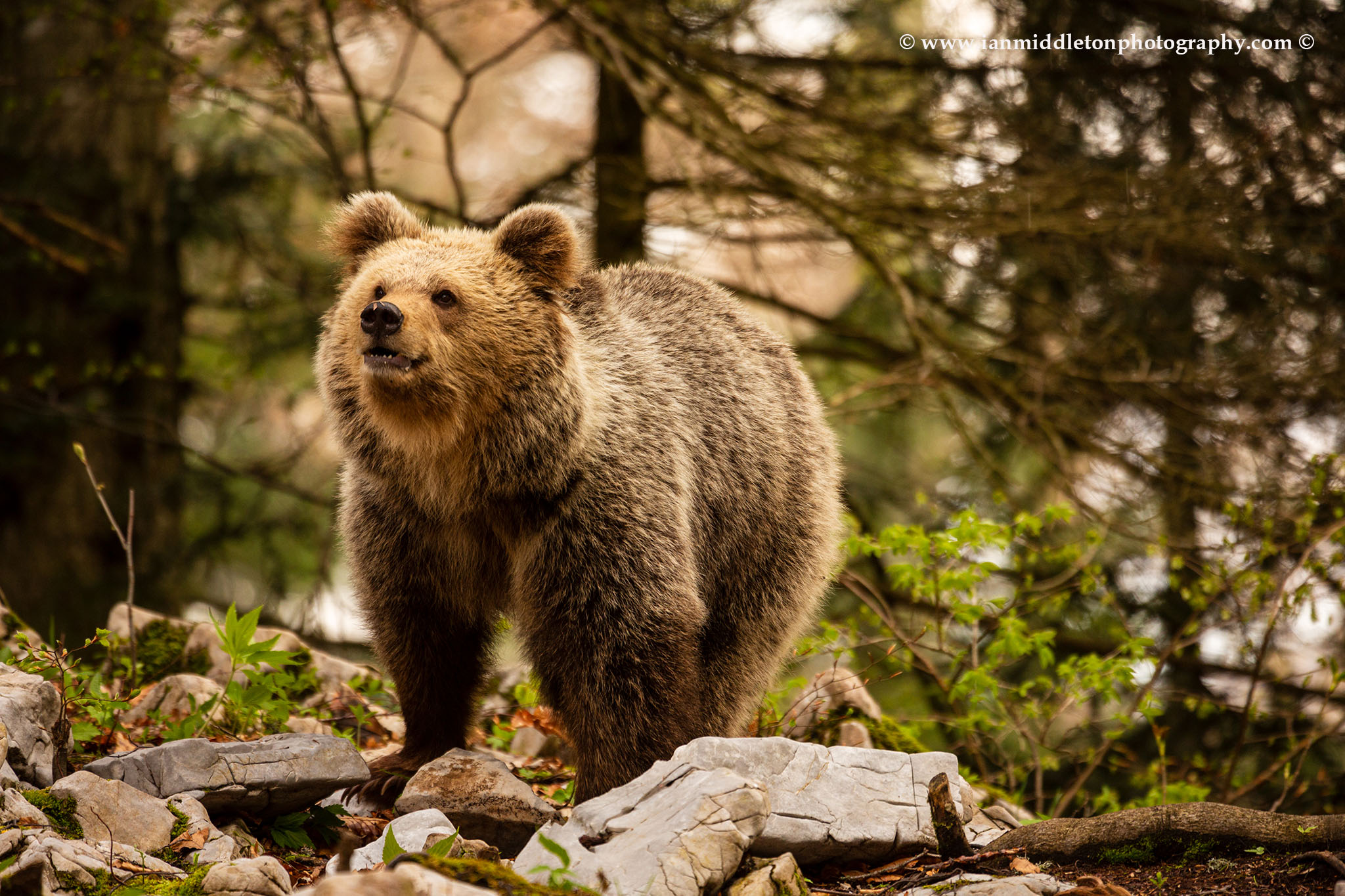
Return to the forest
Back in May 2015, when I ventured down to his base in Markovec to embark upon my first long-awaited experience photographing bears in Slovenia, Miha had only recently begun building his special photographic hides and thus his Slovenian Bears business. He started in 2014 and based it, quite naturally, at the family guesthouse, Mlakar Inn. Accommodation is also offered in conjunction with your bear experience, along with home-cooked food before and after. You can choose to book a photo hide for one day, or several days. Or you can go on one of the many multi-day trips he offers for the chance to capture mothers and their newborns.
On my first visit, I was able to photograph two young brothers, and two big bears. Within an hour of entering the hide, the brothers came and spent at least two hours frolicking in woodland before us. I came away with some great shots.
Upon my return this year, 7 years later, Miha now has a grand total of 36 hides placed in strategic locations within the densely forested regions of Notranjska and Kočevje. The hides are scattered throughout an area covering 30 x 20kms. Obviously as demand has grown, Miha has also collaborated with other guesthouses around the region to offer food and accommodation for the trips. I was invited to join Miha and two Italian photographers at the lovely Gostišče Ana in Retje, Loški Potok, where lunch was waiting.
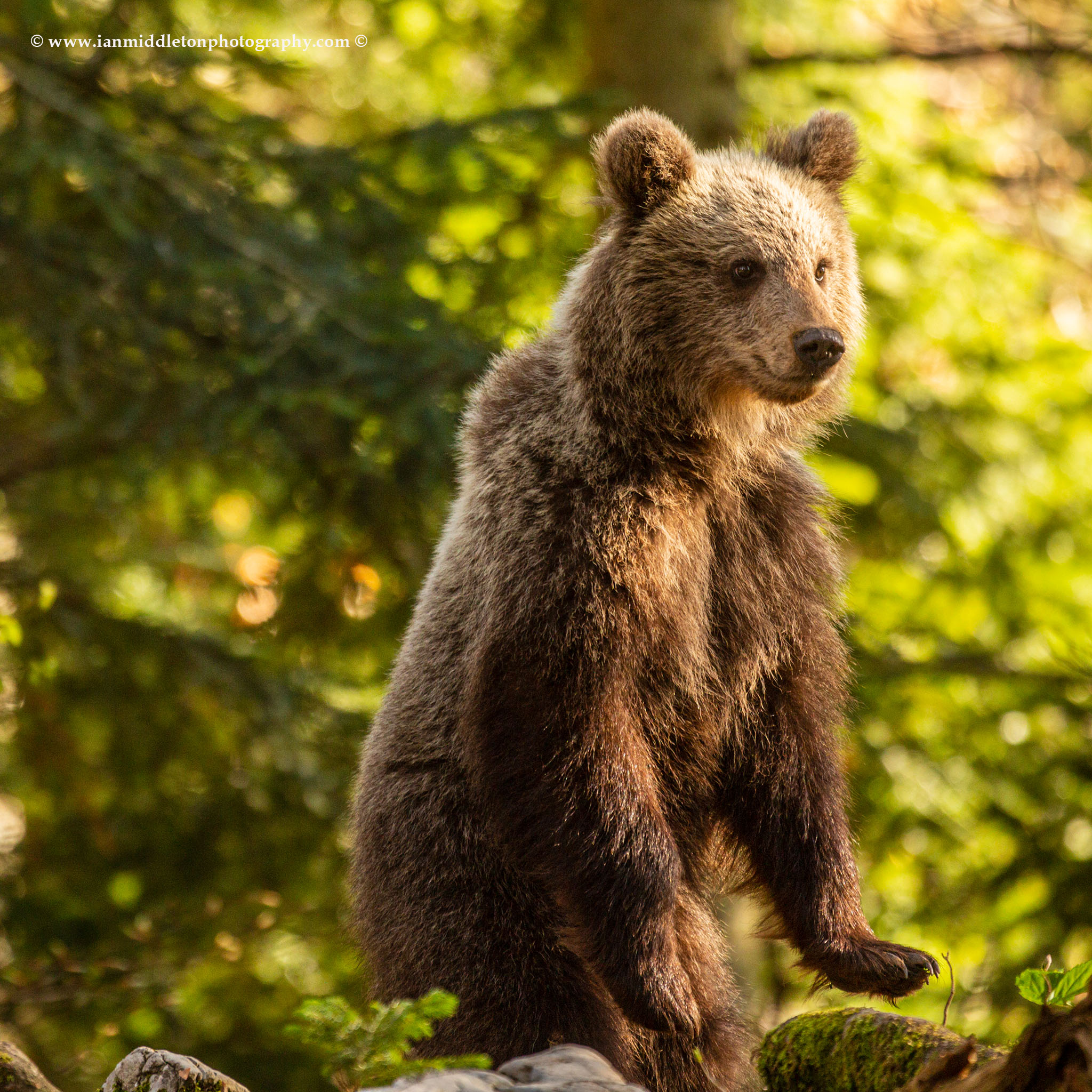
Being well prepared
“Do you have a tripod with you?” asked Miha.
“Yes, I do.” I replied. Thankfully I always take it with me, even if I think I won’t need it.
“Bring the head,” he told me. “I have made special wooden blocks you can attach it to.
This was, as it turned out, an ingenious idea.
As we drove off in the car to where we would start our short walk to the hide, Miha gave everyone a rundown of the rules and etiquette, which are not only designed to protect the photographer but also the bears. Once in the hide, no one must leave until Miha comes back. Absolute silence must be maintained at all times. This also means considering the use of controls on our camera.
“Turn off the focus beep, and the focus light,” said Miha. “Strictly no flash photography. And also turn off continuous shoot. Just one shot at a time, otherwise the noise will scare off the bear.”
Miha went on to explain how to behave when a bear comes. “Don’t start photographing right away. The bear will approach cautiously, and first will be very alert to any possible danger. It will scout the area and only start to eat when it feels safe. Wait for the bear to settle and start eating before taking any photos. Also, don’t photograph birds or any other animals while waiting for the bears, as they may be nearby and be scared off before they arrive.”
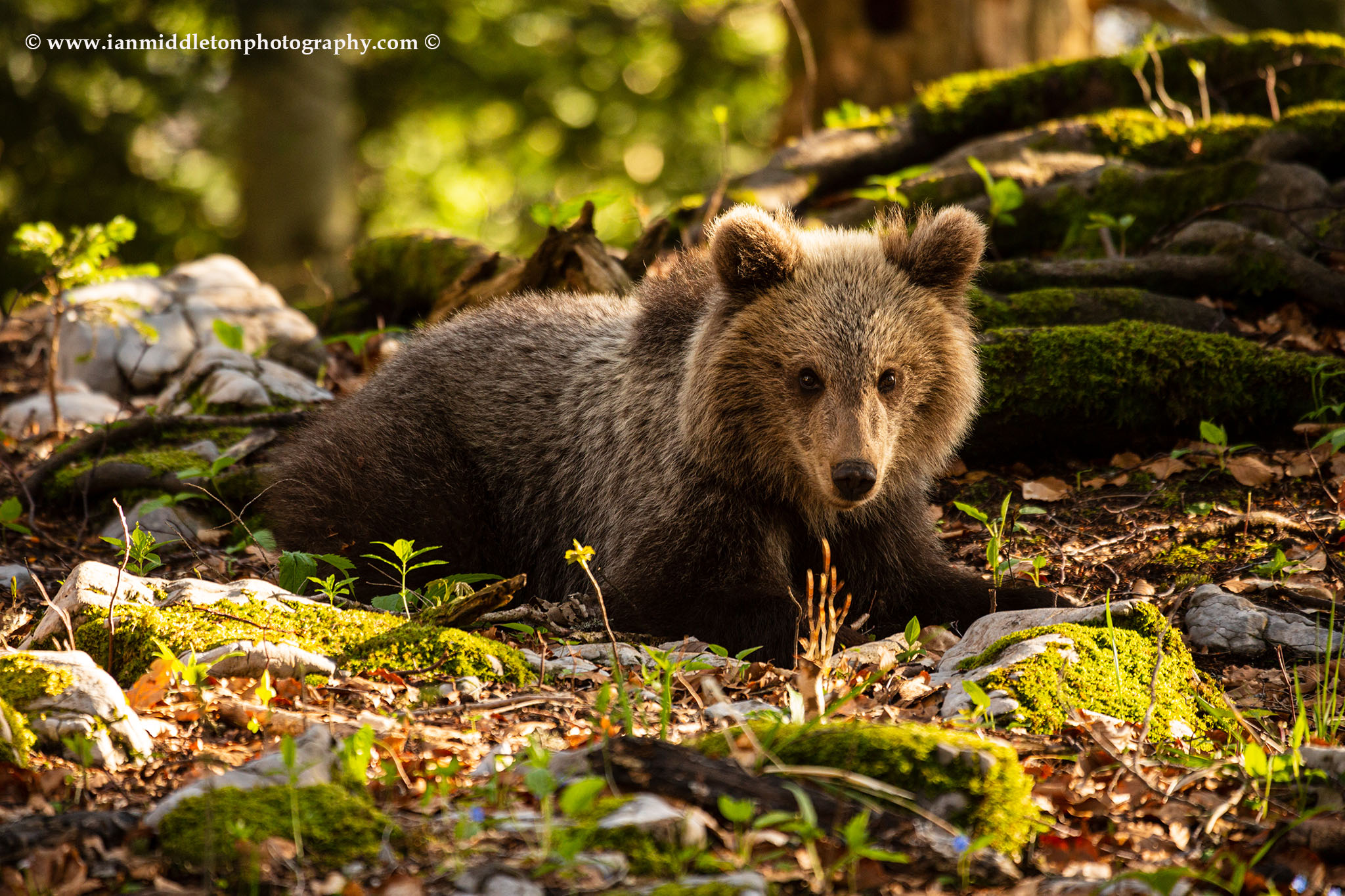
Tracking the bears
Miha drove us deep into the forest along a dirt road before stopping at a small lay-by. From here it was a relatively short walk to the hides. Along the way, he stopped to look at one of the many cameras he has strapped to a tree. While he is an expert tracker, he also now makes use of modern technology.
These cameras are strategically placed around his hides. Any movement triggers a sensor and the camera starts taking photos, some of which are sent to Miha's phone. The cameras also have infra red (IR) capability for night shots. This is a very effective way of monitoring activity around his hides, which of course allows him to choose the best hides for the photographers. Naturally, this increases the chances of a sighting on the day. The camera showed a lot of activity that very morning, so the chances were good.
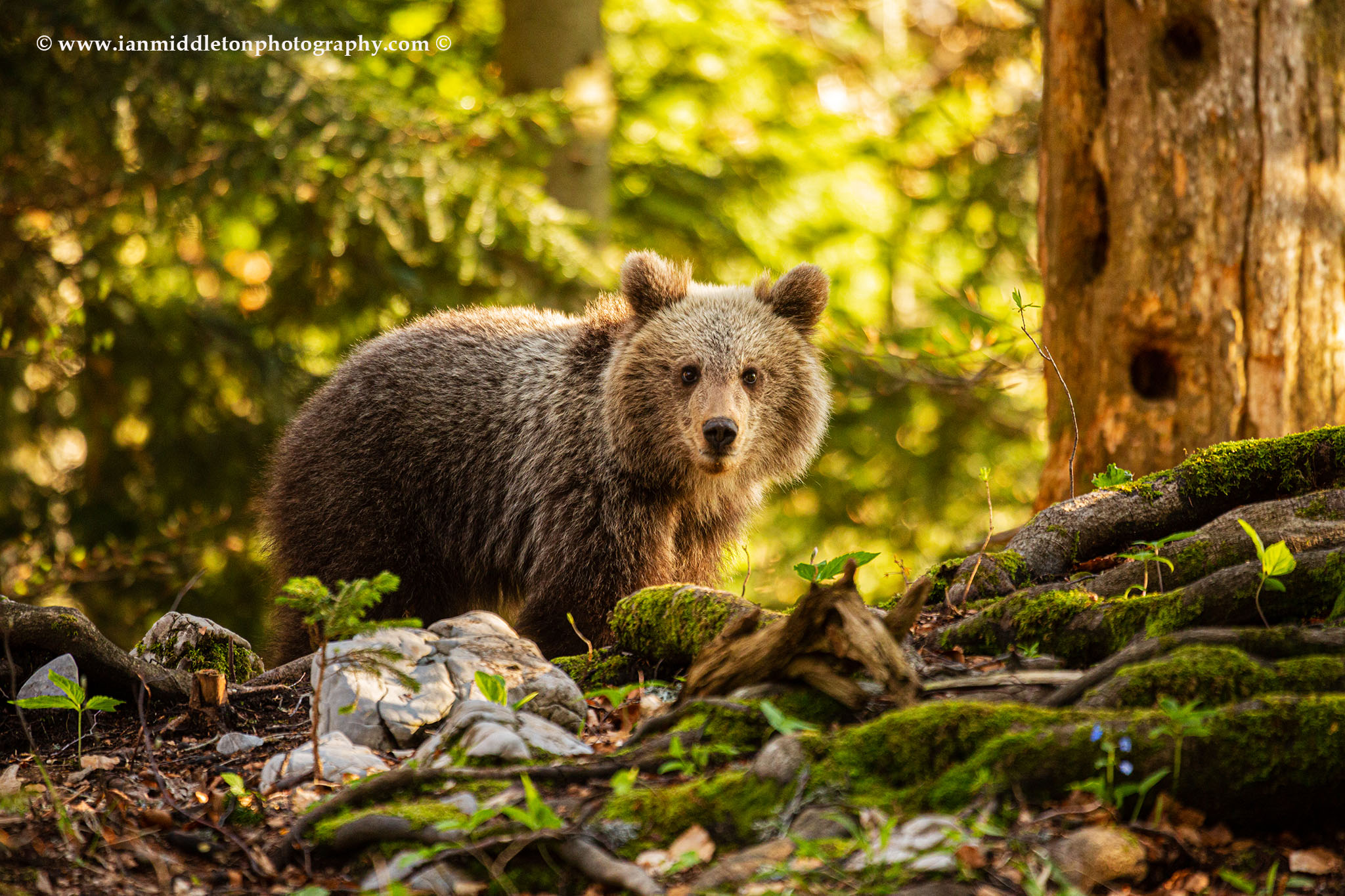
Into the hide we go
There were three of us, and we were given a hide each. We checked our mobile signals to ensure we could contact Miha in case of an emergency, and he also gently reminded us to put our phones on silent. Once inside, I screwed my tripod head to the wooden block and setup my camera. The hides are designed for photographers. Along with the windows there are special camera holes with a cover you place over your camera. Then you put the lens through the cover hole so only the lens is poking out. The rest of you and your camera are camouflaged.
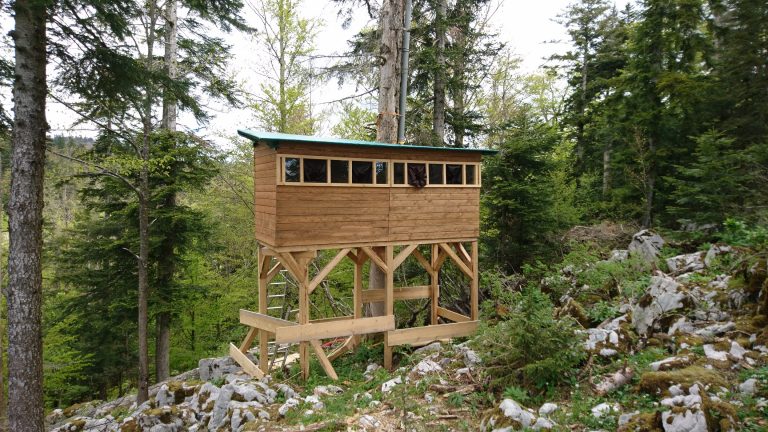
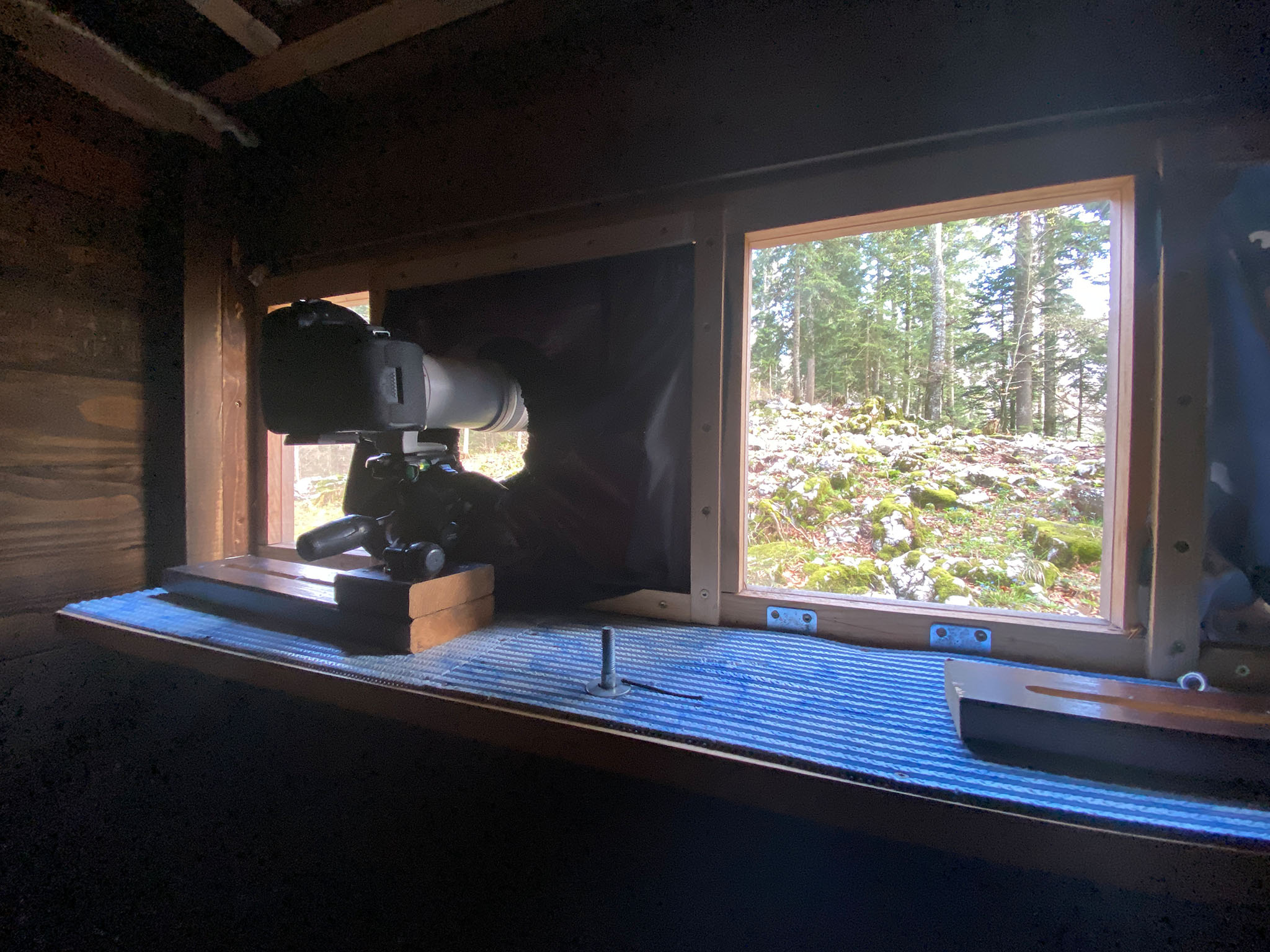
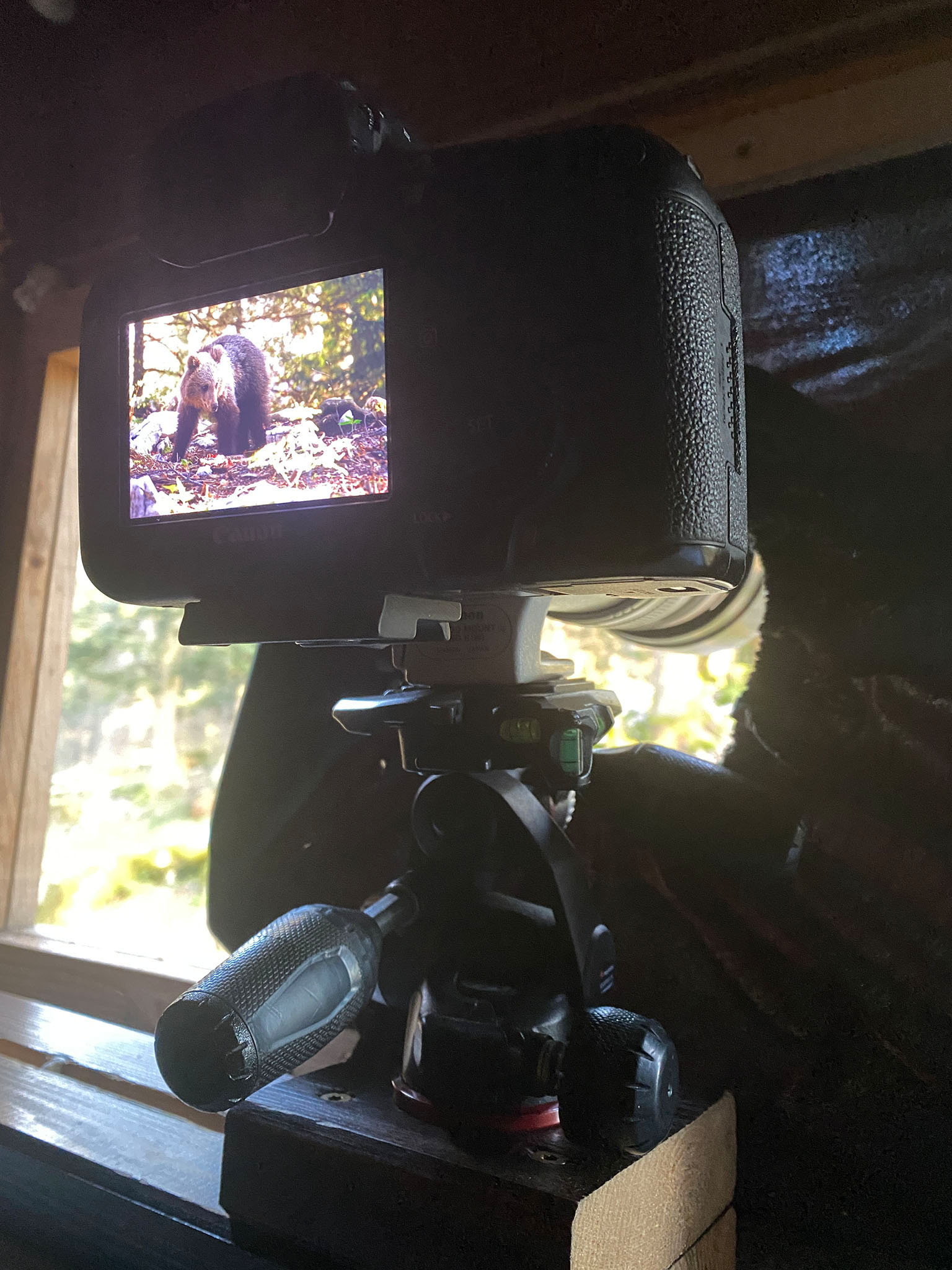
Equipment
The feeding area here is around 10-20 metres away. Photography distances vary from hide to hide, but they are around 10-50m. On my shoot back in 2015 we were also about 10-20 metres away.
Now I’m not normally one to talk about people needing great equipment for taking photographs, but there are times when a certain type of camera and lens are necessary. Given the distance, and the varying distance, a good zoom lens is essential; ideally a 100-400mm or anything up to 500mm or more.
I used the Canon EF 100-400mm f/4.5-5.6L IS USM. At 400mm, this lens allowed me to get close to the bears, while also being able to pull back and show the bear in its surroundings. A good quality lens is important too, although you can make do with a lower end one if that is all you have. But given this unique opportunity, my advice is to either borrow a higher quality lens from a friend, or rent one.
A good camera body is essential too. I was using the Canon EOS 5Dm3. Photographing wildlife in the forest can often mean low light levels, so in many cases you will need to increase the ISO to get a fast enough shutter speed. Therefore, a camera that can perform well in low light and offer low noise at high ISOs is essential. The stability provided by the tripod head attachment meant that the risk of camera shake was significantly reduced. An alternative here is to use a beanbag.
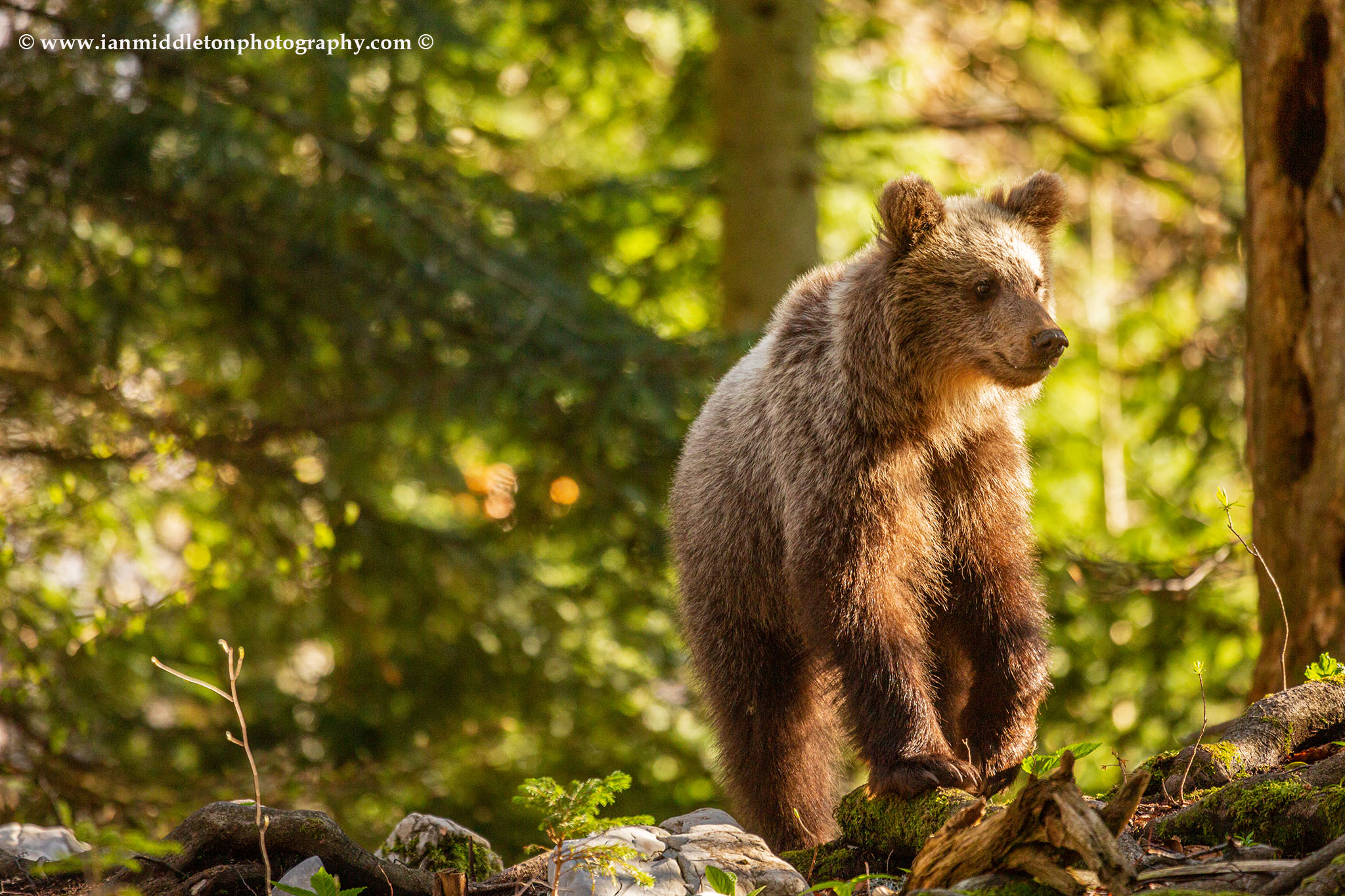
How to get the best photos
We entered the hides around 2pm, and at 4pm we got our first visitor, an adult bear. The morning rain had cleared away and now we had a lovely afternoon of patchy sunlight. The urge to start shooting was overwhelming. However, I heeded Miha’s instructions and waited patiently for the bear to feel safe. It was clear that the bear was on edge, and you could see how it was alert and scouting the area to ensure it was safe. When it started eating, I started photographing.
This is where Miha’s knowledge of photography pays dividends. The light was breaking through the trees and spotlighting the exact areas where the food had been laid out. The bear lifted his head high to smell the area, and beautiful soft light illuminated his face. My first shots were magical, and we had only just begun.
Shortly after though, something obviously spooked the bear and it ran off into the forest. Just goes to show how timid even the big ones are. However, this was just the beginning. A little while later, two bears came together and after settling down were obviously more at ease because they stayed for quite a while, offering numerous photo opportunities.
When they left, a short wait later our smallest visitor yet came by. Hard to say how old, but it was alone so maybe 2-3 years old. This cute little fella seemed to enjoy having the place to himself and also remained for quite a while.
Miha returned for us around 7.30. I had seen four bears that day. Apparently, unbeknown to me at the time, there were two more down to the left just before he came. I hadn’t been able to see them from my hide, but the two Italians had. When Miha came he whistled and called out. Partly to tell us it was him coming, and also to warn any bears of his approach I assume. These two bears ran off when they heard him.
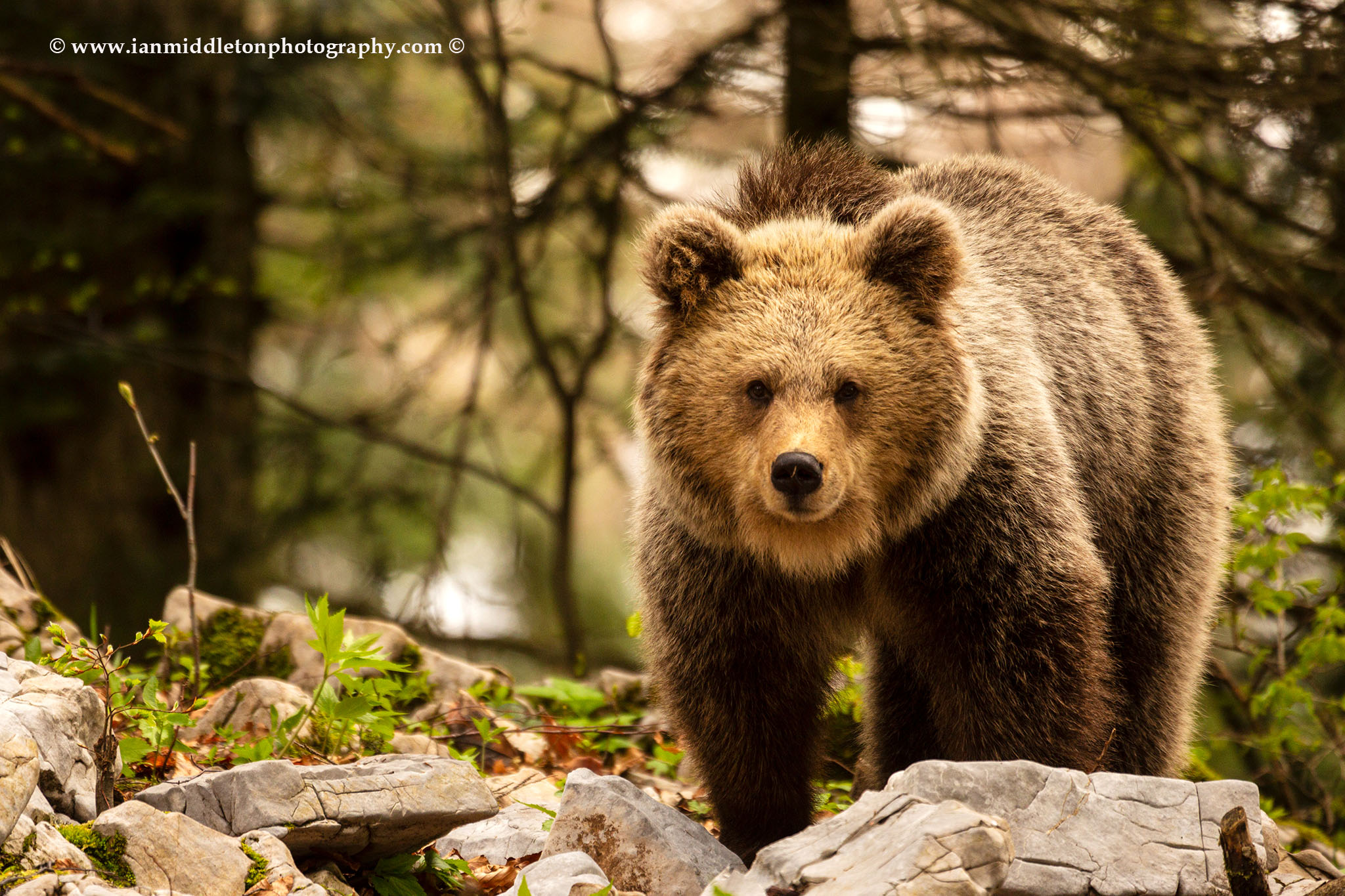
Bear safety
Bear attacks are rare, and in most cases usually the result of a bear being startled or someone getting between a mother and her cubs. This usually happens when people are not making any noise. Bird watchers are especially at risk because they are creeping around the forest trying not to disturb the birds. The general rule of safety when out walking in the forest is to be mindful of this and conscious of making your presence known. If you are with others, then talk. Walk with a heavy footfall. If you are alone, take a stick and bang occasionally on trees or branches or hang a small bell on your backpack.
Bears have an acute sense of smell and hearing, so it’s highly likely they will smell or hear you before you see them; in which case they will move away. Going out alone to take photos is dangerous, and you risk startling a bear. Therefore, going with a specialised organisation like Slovenian Bears is the best and safest way.
As you have also seen here, you will be far more successful and able to photograph more bears than you would if you try it alone. Plus, you won’t hurt yourself or any bears. It’s important to remember that if a bear does attack a human, it’s not only the person who gets hurt or killed, but the bear is then scheduled for termination and the hunters must track down and shoot it.
Do you really want to give yourself and a bear a death sentence?
Responsible tourism
Although Miha has 36 hides, they are not all in constant use. The Slovenian Bears ethos is to minimise the impact on the bears and their habitat. Therefore use of hides is rotated to ensure the bears have peace and quiet as much as possible. This also helps to ensure the bears get to know this location as a safe and reliable source of food, thus maximising the chance of their return and your chance of spotting them.

The best way to photograph bears
So as you can see, without doubt the best way to photograph bears in Slovenia is with Slovenian Bears for both safety and reliability. When it comes to viewing wildlife there is never a 100% guarantee, but Miha’s superb setup ensures the highest rate of success.
For more information contact Miha Mlakar: Website: slovenianbears.com / Email: This email address is being protected from spambots. You need JavaScript enabled to view it. / Tel: 041 582081
STA, 10 May 2022 - The government has adopted a new seven-year strategy for tourism that envisages a moderate increase in accommodation capacity and quantitative indicators, and focuses on higher quality. The total tourism demand is expected to generate EUR 2.1 billion in added value in 2028, which would be a 59% increase compared to 2019.
The basic tourism development document for 2022-2028, adopted on Tuesday, responds to the "new circumstances and challenges faced by the tourism industry, while also developing and promoting key advantages of tourism", the government said.
It added that, in order to achieve the vision of green and boutique tourism with reduced carbon footprint and greater value for all, the Slovenian tourism sector was being strategically focused on developing and marketing balanced offerings.
The strategy is based on the offering of "sustainable boutique tourism of higher quality, based on the Slovenian natural and cultural identity, which is a generator of higher value."
The strategy aims at implementing a balanced growth scenario that envisages a moderate increase in accommodation capacity and quantitative indicators, and above all focuses on higher quality and added value and restructuring of offering.
The document sets five strategic goals - increasing the quality and value of offerings and extending them over the entire year, increasing the satisfaction of local residents, employees in tourism and guests, placing tourism as a generator of value and sustainable development, decarbonising and balancing tourism and ensuring competent and efficient management.
In order to achieve these goals, the strategy identifies policies and measures relating to investments and the business environment, public/common infrastructure and heritage, human resources for higher added value, sustainability, accessibility and sustainable mobility, destination management and tourism connectivity, and products and marketing.
There are also three horizontal policies that support the key strategic policies - digital transformation of tourism, legislative and financial regulation and an institutional framework and horizontal inter-ministerial policy coordination.
One of the main points of the previous, five-year strategy was consolidation of state assets in tourism as part of a holding that would be managed by Slovenian Sovereign Holding, financial and business restructuring and, eventually, privatisation.
These are investments in the tourism companies Istrabenz Turizem, Thermana, Sava Turizem, Hit Alpinea, Terme Olimia, Adria Turistično Podjetje and Unitur.
"The procedure has been suspended," the new strategy says, adding that the management, consolidation and privatisation plan for state-owned tourism companies needed to be adapted to the current situation, opportunities and new strategic goals.
The document proposes a concept of management and privatisation of these investments that would separate real estate ownership and professional management of tourism activities.
It also proposes that a real estate fund be established for this purpose, and that the process of management and privatisation of state investments in tourism be optimised with the aim of higher profitability and competitiveness.
The government expects positive financial effects, including added value generated by demand in basic tourism activities increasing by 43% from EUR 920 million in 2019 to EUR 1.31 billion by 2028, assuming an average annual growth rate of 8.9%.
Together with other activities indirectly related to tourism, the total tourist demand is expected to generate EUR 2.1 billion in added value in 2028, which is a 59% increase compared to 2019.
The government has estimated that in the entire period covered by the strategy, EUR 11.5 billion in added value is expected to be generated from all activities related to tourist demand.
Export of tourist travels are expected to increase from EUR 2.8 billion from 2019 to EUR 4 billion in 2028.
In order to achieve the objectives of the strategy in all areas, approximately EUR 1.54 billion of European and national funds would have to be invested in the seven years.
STA, 30 April 2022 - Camping Plana & Bar 66 near Pivka has been rated the most popular Slovenian campsite and the 82nd most popular in Europe by the users of the Berlin-based portal camping.info.
Along with Plana & Bar 66, one of the 110 Camping.info Award 2022 winners, Center Kekec at the foot of the Maribor Pohorje hills and Šobec, not far from Bled, have been voted best Slovenian campsites.
One of the biggest such portals in Europe, camping.info offers information about more than 23,000 campsites.
A comparison of prices across those campsites shows a couple will pay EUR 12.85-37.22 on average per night for pitch, electricity, car park and local taxes.
The portal's data shows an average price per night in Slovenian campsites is EUR 30.13, which is below the prices in Switzerland (EUR 37.22), Italy (EUR 36.95), Croatia (EUR 36.06), Spain (EUR 34.12) and Austria (EUR 31.92).
Learn more about Camping Plana & Bar 66
STA, 29 April 2022 - It is full steam ahead for the summer train on the Koroška route. The train will run from Maribor to Bleiburg in Austria and offer transport to passengers and their bicycles. Its first trip is scheduled for 1 May and the train will operate each Saturday from 11 June to 27 August.
As in previous years, the train will make two trips daily, giving passengers sufficient options to arrange their trips, Aleš Rupreht of the Koroška Regional Development Agency told the STA.
"The route will serve the cyclists as they make their way along the Drava Cycling Route and the route running along the Mislinja Valley," he stressed.
When public transport was suspended in 2020 due to the coronavirus pandemic and countries closed borders, more people started to cycle as a form of recreation, and the number is still growing, Rupreht said.
"We saw a decline in foreign guests, but the number of Slovenian cyclists offset that. The figures are better than expected. The bike train, running only on Saturdays and bank holidays, saw some 200 cyclists and over 700 other passengers last year," he noted.
Rupreht hopes that as tourism recovers and the Covid-19 situation stabilises, the number of cyclists will rise this season.


